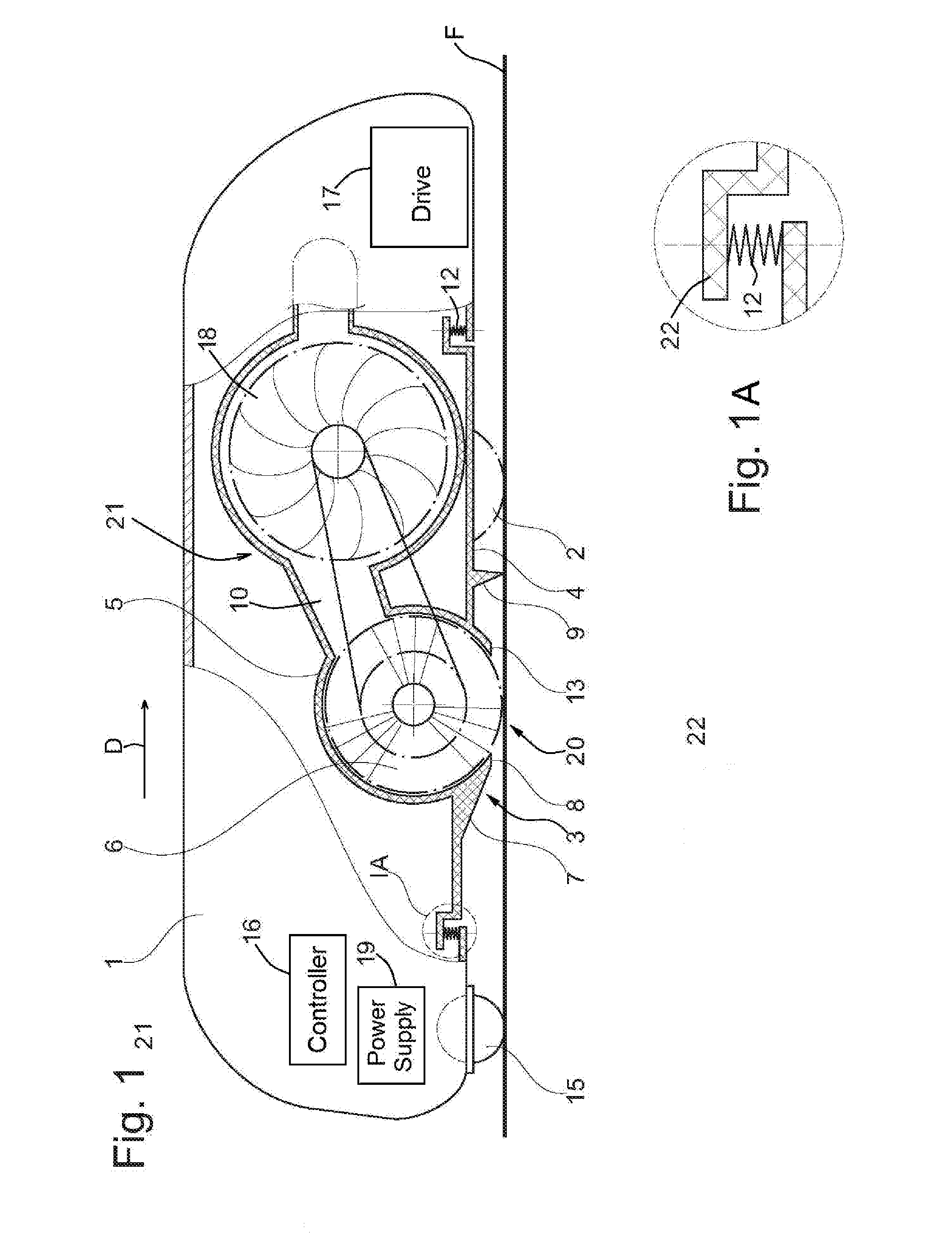Vacuum-cleaning robot
- Summary
- Abstract
- Description
- Claims
- Application Information
AI Technical Summary
Benefits of technology
Problems solved by technology
Method used
Image
Examples
Embodiment Construction
[0021]As seen in FIG. 1 a vacuum-cleaning robot according to the invention has a main housing 1, typically of injection-molded plastic holding a schematically illustrated controller 16 and drive 17, as well as a battery serving as power supply 19, antennas, and such.
[0022]The generally planar rigid bottom wall of the main housing 1 carries two coaxial drive wheels 2 that are rotated by the drive 17 and that can be differentially rotated to steer the device. A ball-type caster 16 at the front end of the main housing bottom wall provides the third point of support, making the main housing 1 stable even on an uneven floor surface F.
[0023]The main housing also holds a blower 18, structure including a duct 10 connected to the suction side of the blower 18 for drawing in air and separating dirt. The design of such a vacuum cleaner, which is also called a vacuum robot, has been known for a long time. The weight of the basic body of the vacuum robot is borne by the two driven wheels 2 and t...
PUM
 Login to View More
Login to View More Abstract
Description
Claims
Application Information
 Login to View More
Login to View More - R&D
- Intellectual Property
- Life Sciences
- Materials
- Tech Scout
- Unparalleled Data Quality
- Higher Quality Content
- 60% Fewer Hallucinations
Browse by: Latest US Patents, China's latest patents, Technical Efficacy Thesaurus, Application Domain, Technology Topic, Popular Technical Reports.
© 2025 PatSnap. All rights reserved.Legal|Privacy policy|Modern Slavery Act Transparency Statement|Sitemap|About US| Contact US: help@patsnap.com



